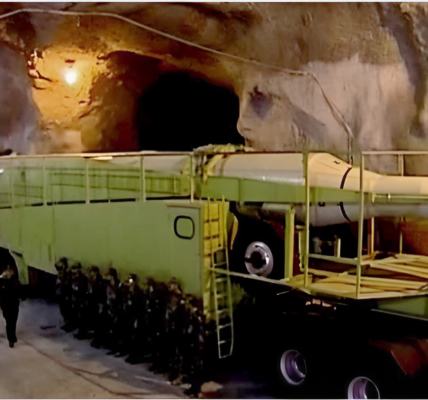
The Hwasong-12 ballistic missile, often overshadowed by its intercontinental-range counterparts, stands as a pivotal element in North Korea’s arsenal. Dubbed the “Guam Killer,” this missile is a key component of Pyongyang’s strategy for conventional and nuclear retaliation in the event of open conflict with the United States. Its development highlights North Korea’s growing capacity to counter U.S. military dominance in East Asia.
The Hwasong-12 reportedly underwent three failed flight tests in April 2017 before achieving operational success later that year with three successful tests in May, August, and September. The missile boasts an estimated range of 6,000 kilometers, making it capable of reaching key U.S. military installations on Guam. This capability significantly complicates U.S. war planning in the region, as Guam serves as a critical hub for American air and naval operations.
The Hwasong-12 entered service alongside North Korea’s intercontinental ballistic missiles, the Hwasong-14 and Hwasong-15, which have the range to strike the U.S. mainland. However, the Hwasong-12’s focus on targeting regional assets provides Pyongyang with a versatile option for tactical applications, complementing its broader strategic deterrent.
Deployed via wheeled transporter erector launchers (TELs), the Hwasong-12 benefits from enhanced survivability by allowing for rapid redeployment. The missile’s design is thought to build on the Hwasong-10 (Musudan), incorporating an improved engine and elongated structure for greater range and payload capacity. Despite sharing a launcher with the Hwasong-10, the Hwasong-12 has not yet been exported, unlike its predecessor, which Iran acquired and modified in the 2000s.
The Hwasong-12 serves a role in North Korea’s arsenal similar to that of China’s DF-26, though with notable differences. The DF-26 utilizes solid fuel, enabling faster launches and longer storage times while also carrying a larger warhead and offering higher precision. By comparison, the Hwasong-12’s liquid-fuel system necessitates on-site fueling before launch, which can reduce operational readiness.
North Korea is actively developing solid-fuel successors to the Hwasong-12 and its intercontinental ballistic missiles, aligning with trends in modern missile technology. The nation has already begun replacing its short-range ballistic missile inventory with advanced solid-fuel designs, signaling a broader shift towards greater readiness and reliability.
Upgrades to the Hwasong-12 are also expected, including enhanced guidance systems and countermeasures to interception, ensuring its relevance even as newer systems come online. The missile’s presence has already posed significant challenges to U.S. strategic planning, and with a successor expected before 2025, the vulnerability of key assets like Guam may only grow.
The Hwasong-12 represents a critical advancement in North Korea’s ability to project power and deter aggression. Its entry into service underscores the evolving nature of regional security dynamics in East Asia, highlighting the growing sophistication of Pyongyang’s missile program and its implications for U.S. military operations in the Pacific.
As North Korea continues to enhance its capabilities, the Hwasong-12 stands as a stark reminder of the shifting balance of power in the region and the ongoing challenges facing American defense strategy.




